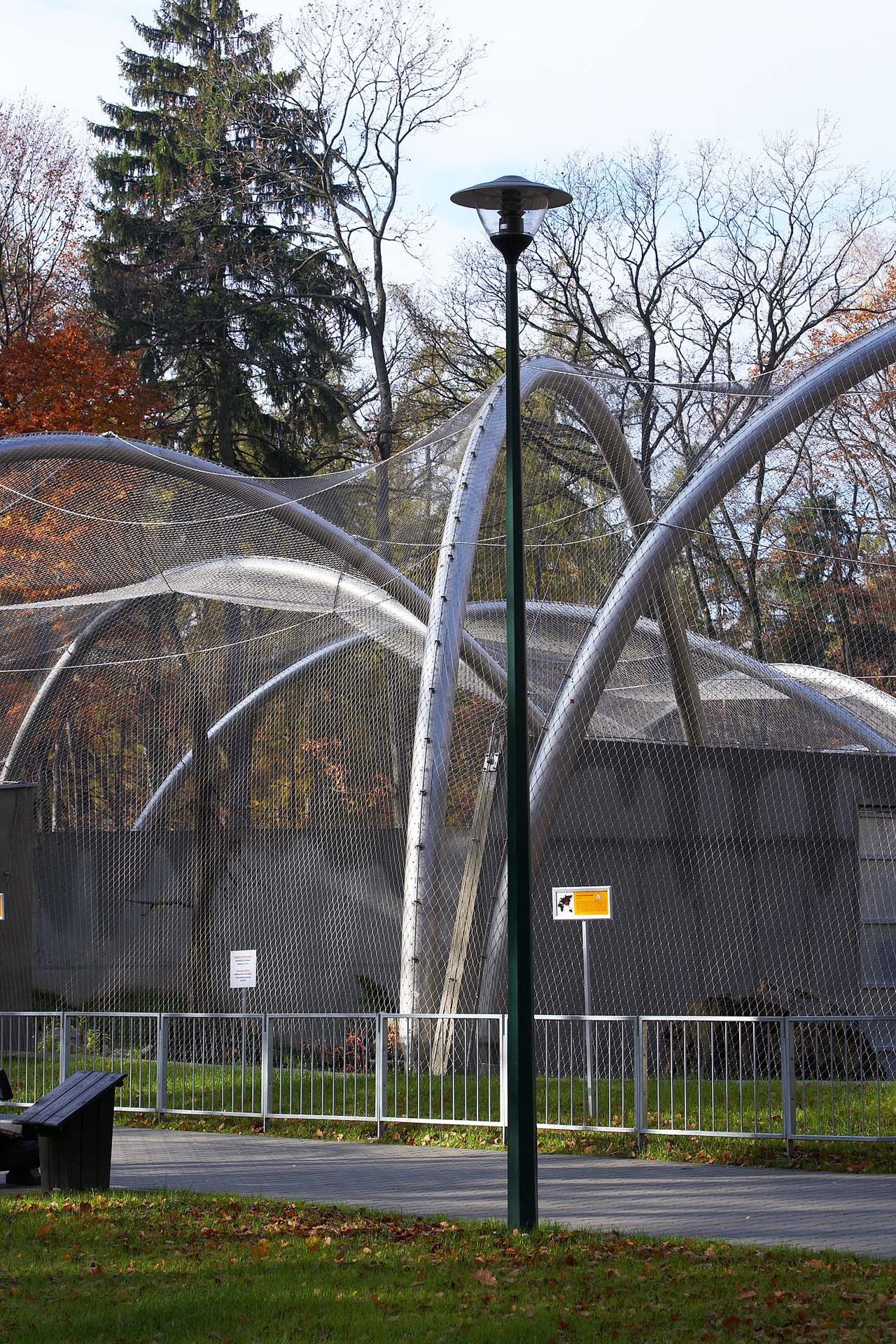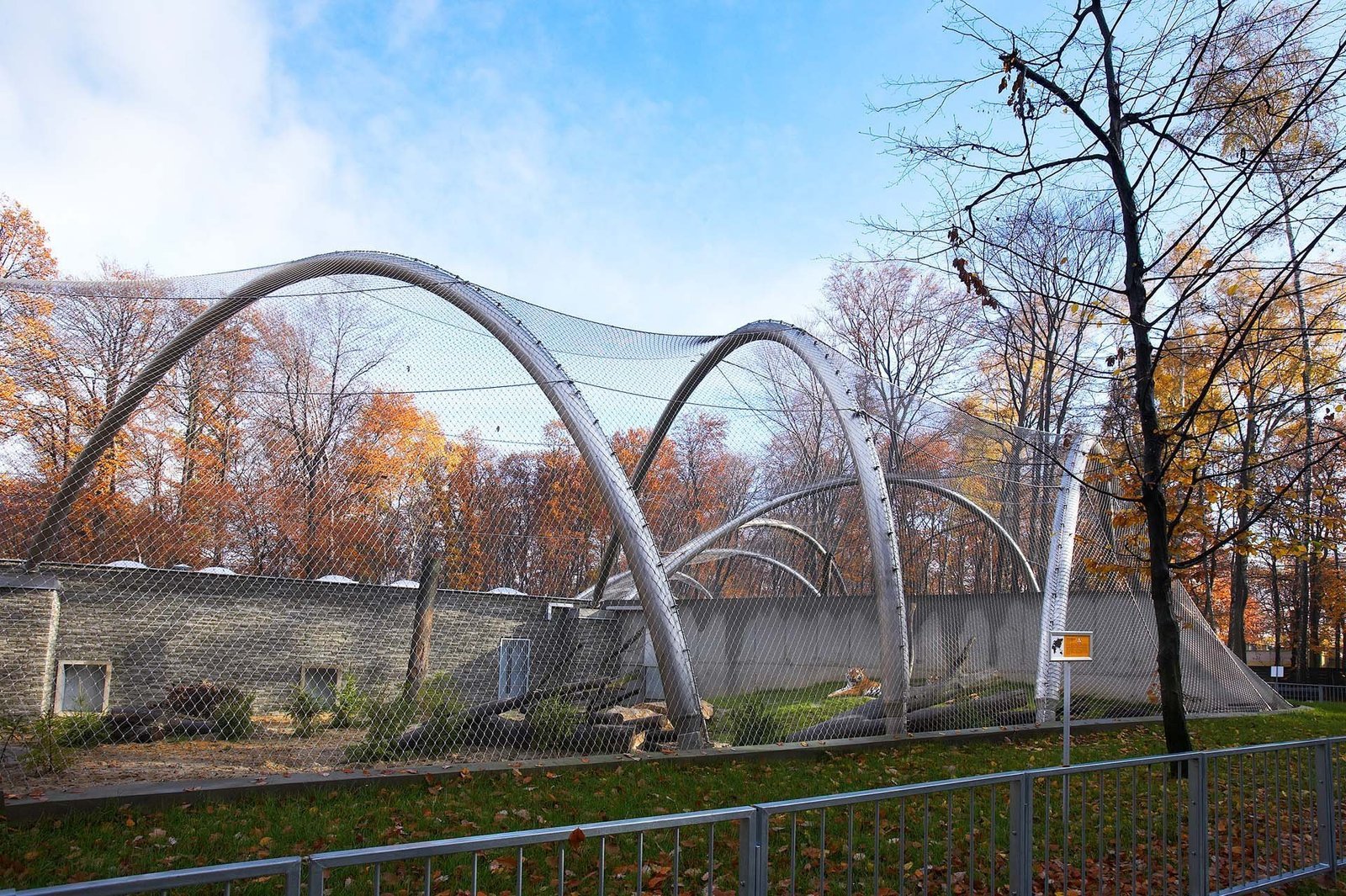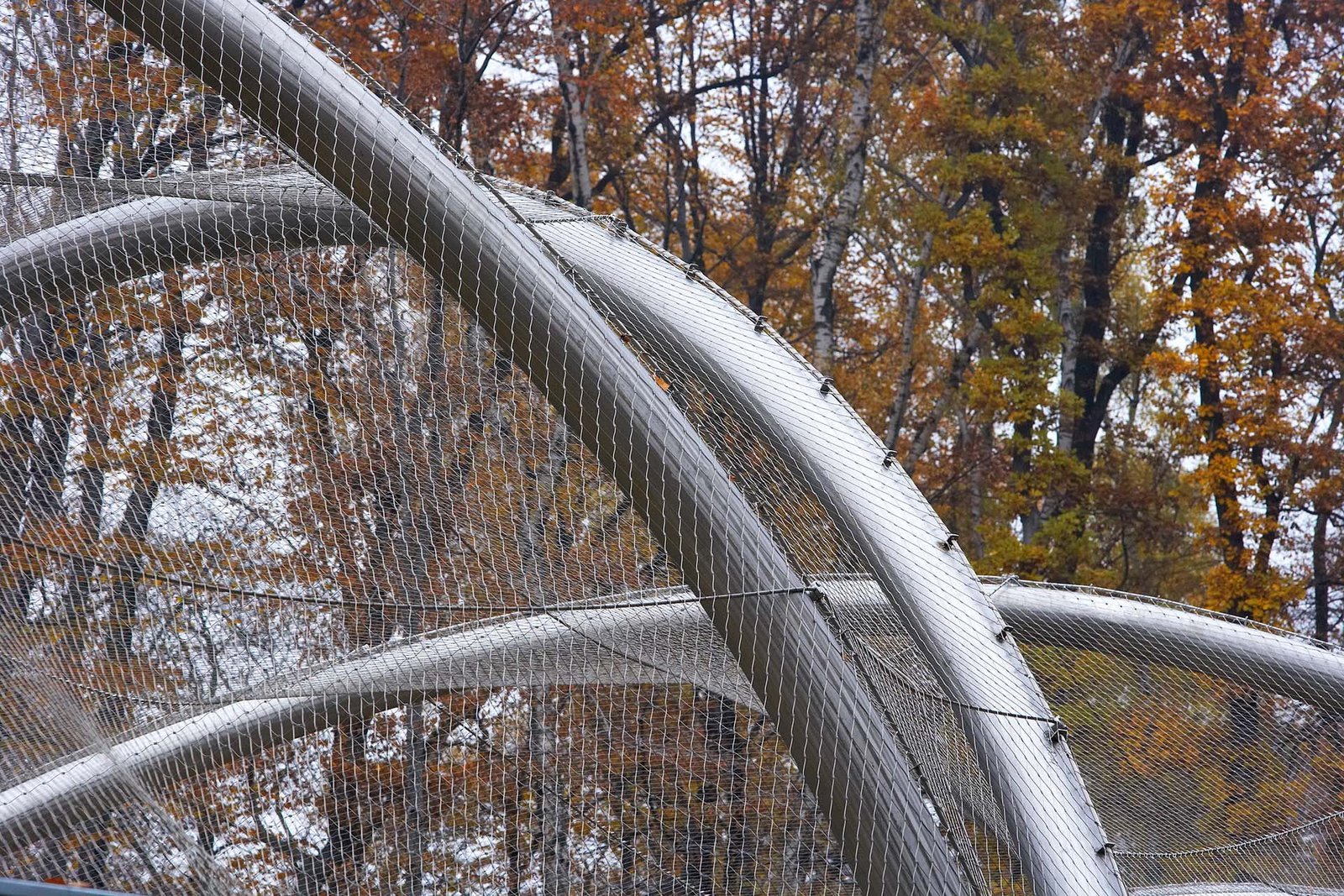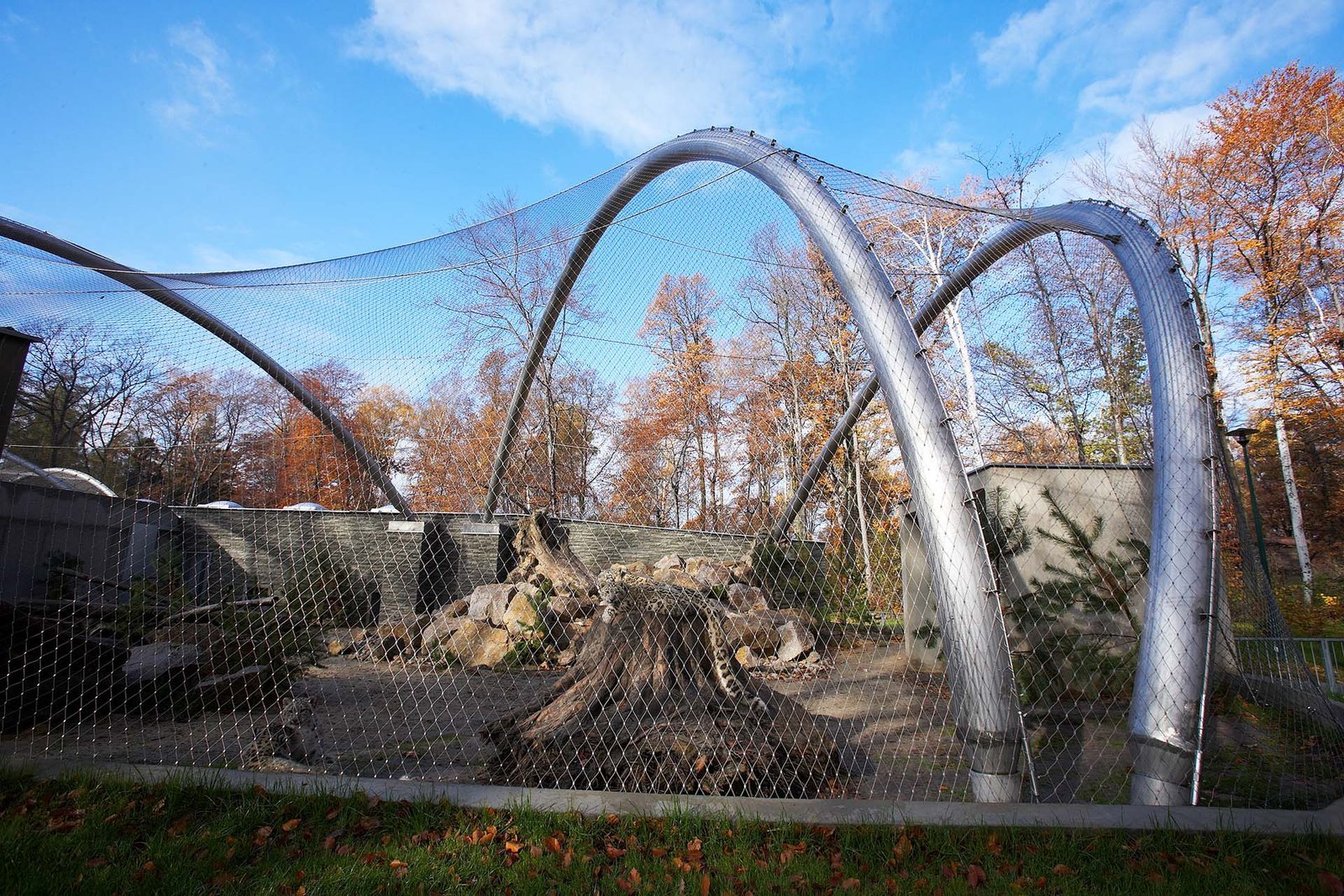Tiger Enclosure Zoo Design Idea: Stainless Steel Cable Mesh
Creating a tiger enclosure for zoo involves balancing animal welfare, safety, and visitor experience. Stainless steel cable mesh is an ideal choice because of its strength, durability, and nearly invisible appearance. This article explores the essential design elements, including Clearview fencing and crowd control barriers, to ensure a secure and enriching environment.
Essential Elements of a Tiger Enclosure

1. Space and Layout
Each adult tiger needs at least 2000-4000 square meters. The layout should include open roaming zones, shaded resting areas, water bodies, and enrichment spaces to simulate their natural environment. It is crucial to include separate spaces for breeding and off-display care.
2. Secure Fencing System
Perimeter fencing must ensure safety and visibility. Clear view fencing offers enhanced visibility and security, blending strength with transparency. Anti-climb panels and electric deterrents along the top prevent escape, ensuring the safety of visitors and staff.
3. Natural Landscaping and Water Features
Tigers thrive in environments with diverse terrain. The enclosure should feature trees, shrubs, logs, and boulders for climbing and hiding. A pool or artificial lake with a depth of at least 1.5 meters offers opportunities for swimming, which tigers naturally enjoy.
4. Visitor Management and Safety
To ensure a safe and enjoyable tiger enclosure zoo visitor experience, crowd control barriers are essential. These barriers guide visitors, preventing overcrowding near the enclosure and keeping guests at a safe distance. Proper visitor pathways maintain order, especially during busy hours or events.
5. Viewing Areas
Using glass panels or elevated walkways enhances the visitor experience while minimizing animal disturbance. Laminated glass offers durability, and open sightlines create an immersive viewing experience. The design ensures the safety of both visitors and animals.
Key Considerations for Tiger Welfare
Tigers need ample space to roam freely, reducing stress and promoting their mental and physical health. Environmental enrichment, such as water features and climbing structures, encourages natural behaviors. Additionally, private areas where tigers can rest out of public view are vital for their well-being.

Advantages of Stainless Steel Cable Mesh Use for tiger enclosure zoo
Stainless steel cable mesh offers exceptional strength, easily withstanding impacts from large predators while ensuring visitor safety. Its transparency provides an immersive viewing experience without compromising containment. The material’s corrosion resistance guarantees durability, reducing maintenance needs over time.
Tiger enclosures in zoos provide several important advantages, benefiting the animals, the zoo, and visitors.
- Animal Safety: These enclosures prevent the tigers from escaping and ensure they stay safe from external threats. They offer secure barriers against harmful interactions.
- Public Safety: Strong barriers keep visitors protected. Zoos can create safe spaces to observe tigers without risk, using anti-climb fencing and glass partitions.
- Enrichment: Enclosures are designed to replicate natural habitats. Tigers get climbing structures, water features, and places to hide, helping them stay active and stimulated.
- Health Monitoring: Zoo staff can closely monitor the tigers’ health, administer veterinary care, and provide balanced diets. Enclosures simplify medical check-ups and treatment.
- Education: Visitors learn about tigers through these enclosures, gaining awareness of their behavior, habitat, and conservation. Interactive displays and guided tours enrich the educational experience.
- Conservation: Zoos breed endangered tigers in enclosures to support conservation programs, helping maintain genetic diversity and protect species from extinction.
- Research: Scientists study tiger behavior in enclosures to gain insights into their needs. This research contributes to conservation efforts in the wild.
- Environmental Control: Zoo enclosures provide climate control when necessary, protecting tigers from harsh weather and ensuring their well-being.
- Visitor Experience: Well-designed enclosures offer close viewing opportunities, enhancing the visitor experience while keeping both animals and guests safe.
Important Design Elements tiger enclosure zoo
Strong Support Framework
The mesh must be anchored to a sturdy steel or reinforced concrete framework to maintain proper tension and shape. The mesh aperture size and cable diameter should be selected to prevent escapes while maintaining high visibility.
Enhancing the Visitor Experience
Specific viewing areas provide ideal spots for visitors to observe the tigers without disturbing them. Educational signage can offer information about tiger behavior, habitat, and conservation, deepening visitor engagement and understanding.
Integrating Clearview Fencing for Added Security
Installing Clearview fencing around the enclosure’s perimeter adds an essential layer of security. This fencing offers high visibility and blends seamlessly into the surrounding environment, maintaining the zoo’s aesthetic appeal. Clearview fencing also prevents unauthorized access, ensuring the safety of both visitors and animals.
Using Crowd Control Barriers for Visitor Management
Crowd control barriers help manage visitor flow in high-traffic areas. These barriers prevent overcrowding near the enclosure, reducing stress on the animals. They also ensure a safe and orderly viewing experience by guiding visitors to designated observation points.
Adding Environmental Enrichment for tiger enclosure zoo
Incorporating natural elements enhances the tigers’ quality of life.
Tigers enjoy swimming, so ponds or streams encourage natural behaviors. Native trees and shrubs provide shade, shelter, and a natural feel to the habitat. Climbing platforms and logs stimulate physical activity, offering the animals engaging challenges.
Safety Measures tiger enclosure zoo
To ensure safety, a double-barrier system can prevent accidental breaches. Regular inspections of the mesh, fencing, and barriers help identify wear or damage early. Emergency protocols must also be in place, allowing quick responses to escapes or medical emergencies.
Compliance with Standards and Ethics
The tiger enclosure zoo must comply with guidelines from zoological associations and animal welfare organizations. Ethical designs should replicate natural habitats as much as possible, prioritizing the tigers’ physical and psychological needs.
Maintenance for Long-Term Success
Regular cleaning of the mesh prevents debris buildup, ensuring clear views for visitors. Using high-quality stainless steel and protective coatings enhances resistance to corrosion from environmental factors. Training staff in maintenance and inspection procedures ensures that the enclosure remains secure and functional.
Conclusion tiger enclosure zoo
A well-designed tiger enclosure zoo using stainless steel cable mesh, Clearview fencing, and crowd control barriers offers a perfect balance between safety, animal welfare, and visitor engagement. The enclosure creates a secure and enriching environment for the tigers, while also providing an educational and immersive experience for visitors. Through thoughtful design, zoos can inspire conservation efforts and enhance public appreciation for these majestic creatures.
Related Items








